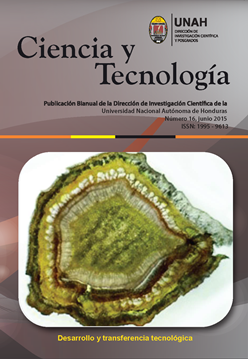Base Line R+D+i in the Faculty of Engineering and the School of Microbiology in 2008-2012 online
DOI:
https://doi.org/10.5377/rct.v0i16.2182Keywords:
scientific research, technological development, innovation, intellectual capital, human factor, relational factor, structural factor. RevistaAbstract
The new changes produced in global economy are considering knowledge as the basic element for generating value and competitiveness. Recently in the society of knowledge, the institutions are interested in defining, assessing, controlling and managing intellectual capital as a key for competitiveness within the socioeconomic context element.
Undoubtedly, the creation of knowledge will be the key for the maintenance of a competitive advantage in any institution, whether it relates to the production of goods or of services. From these new theories based on the knowledge society, d many theoretical scripts have identified the importance of the Intellectual Capital.
The model of intellectual capital has been developed from indicators, which are very useful in higher education institutions (HEIs). This model functions as a support tool for determining a better assessment of the capabilities that add value to the institution, primarily those that derive from intangible assets as a product of I+D+i (scientific research, technological development and innovation.)
The model establishes three keys for understanding the factors: a) human capital, b) structural capital c) relational capital. From these factors, the research proposes to build a base line that will show the reality of I+D+i in the Faculty of Engineering and the School of Microbiology as the target population. The School of Microbiology will be incorporated as the model population. The base line has a cross section design and it will cover the period for the following years 2008-2012.
From the research an increased productivity was demostrated in terms of scientific research projects conducted from 2008 to 2012. The School of Microbiology showed forty-eight (48) projects; with an average of 9.6 projects per year.
In the Faculty of Engineering the data showed 19 research projects in the area of Industrial Engineering and 17 research projects in Civil Engineering , mostly focusing in project implementation. Chemical Engineering developed just 1 research project.
Revista Ciencia y Tecnologia No. 16, Junio 2015: 97-112
Downloads
889
Downloads
Published
How to Cite
Issue
Section
License
© Revista Ciencia y Tecnología
Authors who publish in this journal accept the following conditions: In accordance with the legislation of copyright, Revista Ciencia y Tecnología, recognizes and respects the moral right of authors, as well as the ownership of the patrimonial right, which will be ceded to the magazine for its diffusion in open access in printed version and in digital format. By being part of multiple indexers, databases and reference systems, the articles published by Revista Ciencia y Tecnología will be visible and will be downloaded from these websites, indicating, in all cases, the authorship of the articles, the date of publication and the number of the journal to which they correspond.




